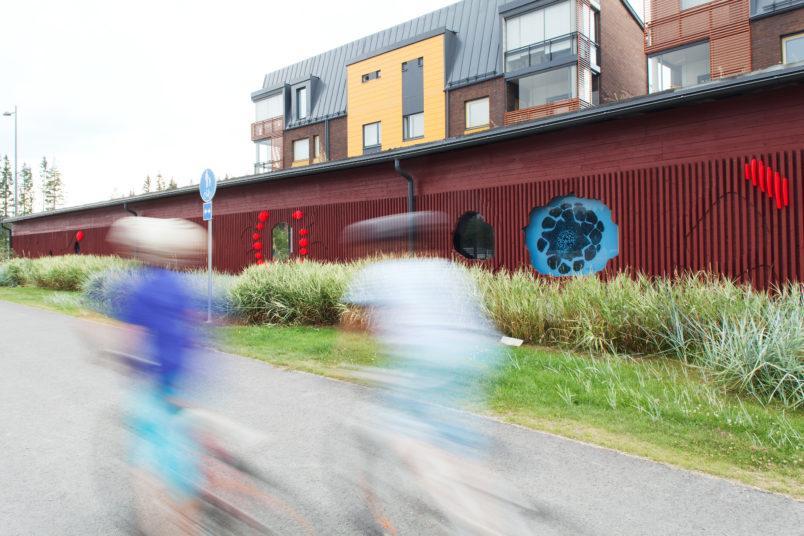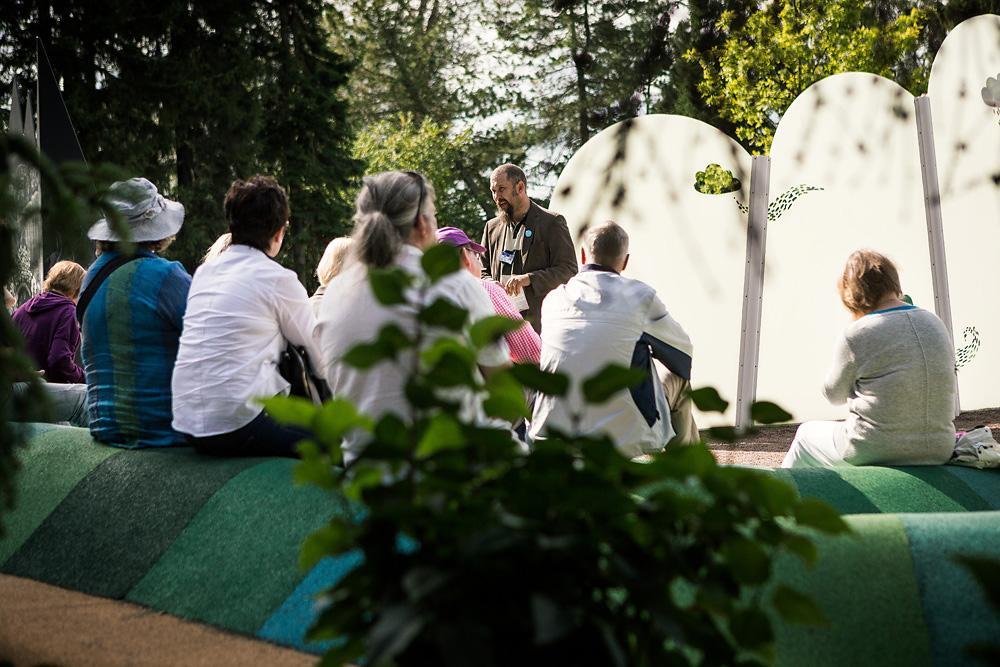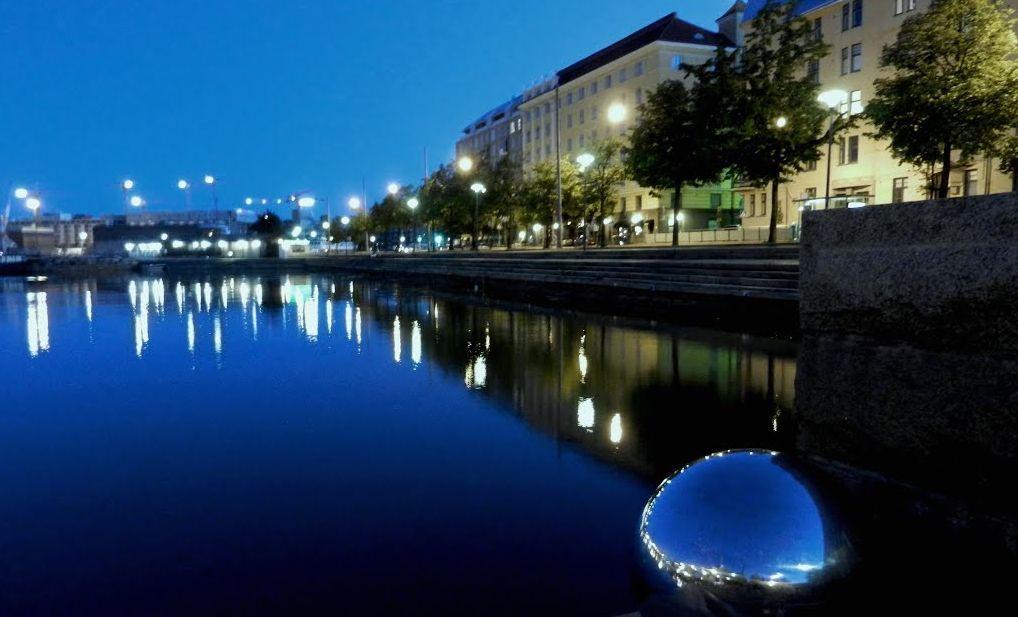Art improves well-being
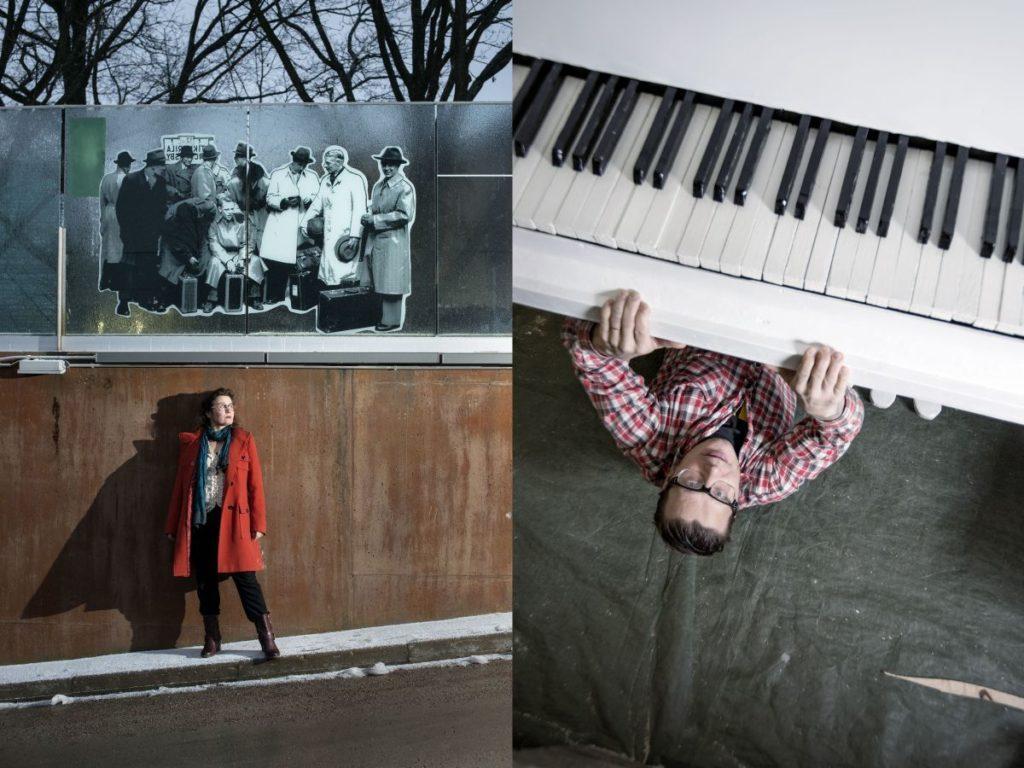
The money invested in art is definitely less than the added value provided by the art for a building or an area. – Artist Outi Turpeinen
It’s allowed also not to understand art. – Artist Anssi Kasitonni
Added value from art
Public art can be almost anything: statues, paintings on the ceilings of schools, hospital façades, road projects or performing art in public spaces. The equestrian statue of Marshal Mannerheim in Helsinki is public art as much as the graffiti produced with permission from the city government or the paintings on the ceiling of the Metsokangas school in Oulu.
Art produced on the Percent-for-Art principle refers to public art purchased with money often allocated for the purpose in the construction budget. That is, art does not appear into a space from nowhere, but at its best it is designed as part of the space at an early stage of the building or area construction project.
– Art raises the value of a building. The sum of money used for the acquisition of art is smaller than the added value provided by the art for the building, says Outi Turpeinen, the provincial artist laureate of South-Eastern Finland and a member of the Finnish State Art Commission.
In a survey conducted in 2015 by the Percent-for-Art project, 55 percent of the respondents felt that art had increased people’s inclination to buy a home in the area and their appreciation for the area, and that art had possibly curbed vandalism.
Art affects the image of a residential area
The profile of art produced in connection of construction projects has clearly been raised in recent years, as public art projects have entered the public discussion with the Percent-for-Art project.
– Art produced for public buildings and residential areas draws mainly positive attention. When successful cases are reported, this increases people’s interest and wish to have art in their living environments, Turpeinen says and adds that resident groups can also express wishes for art in construction projects and finance art. In such cases, it is recommended to include an expert art curator to steer the undertaking.
Art can also be used to make an impact. Art has been used to raise the image of areas with a bad reputation both in Finland and in Sweden. Turpeinen is currently involved in a project in Kouvola, Finland, in which community art is used to improve the community spirit among tenants in the area.
Art improves well-being
Art and culture have been found to improve the feeling of togetherness and social interaction between people as well as to promote occupational well-being and rehabilitation. Furthermore, art has been claimed to boost the body’s immune system.
Public art frequently receives heavy criticism in the media. One of the artworks debated recently is Kiiski (ruffe) by Veikko Hirvimäki acquired for New Children’s Hospital. This artwork has inspired people to discuss what type of art is suitable for a space and how much art should cost.
– It may be difficult to understand the cost of art, because the creation of art is easily seen as something mythical and not as work, Turpeinen comments.
She says that the creators of public art are asked a great deal: in addition to artistic creativity and background work, they must understand materials and the preconditions of construction, and they must be cooperative.
– A public art project must proceed on the construction schedule. The artist cannot disappear without a word into the studio or residence for months.
Art arouses debates
– It would definitely be boring to create art with no smell or taste – art that doesn’t inspire debates, says Anssi Kasitonni, a versatile artist who has created public artworks for sites around Finland. He believes that art can be compared to music: what is good for one is bad for another. Matters of taste can be debated, but there is no one correct interpretation.
According to Kasitonni, art should be approached by everybody.
– I hear very often that someone doesn’t want to go and see art because they wouldn’t understand it. I don’t see why an artwork should be understood. It can only be experienced.
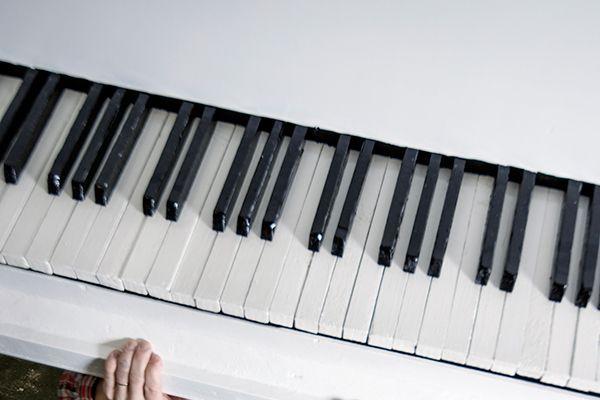
Kasitonni is currently working on a public artwork for the City of Helsinki Finland. The massive wooden grand piano with a glittering finish is to be hung on the ceiling of a Helsinki office building. Photo: Meeri Utti
Art surprises
Kasitonni is currently working on a public artwork for the City of Helsinki at his studio located in Kangasala, Western part of the Finland. This is a massive wooden grand piano with a glittering finish to be hung on the ceiling of a Helsinki office building. Kasitonni has been working on the grand piano for three months, and he has another three to go.
Kasitonni often has to ponder in public art projects what kind of artwork would suit a space. The idea for the grand piano came from a space with a glass ceiling: what could fall through a glass ceiling?
On the other hand, the artist believes that too much tailoring takes away some of the edge of an artwork.
– One of my finished works ended up at the Ministry of Finance, and my first thought was that it wouldn’t fit at all into such a formal space. But the men in suits gave me positive feedback.
Along with the project, I started to think that the more formal the image of the space, the crazier the artwork should be.
Kasitonni hopes that the positive effects of art could be talked about more, because he thinks that there is demand for art. “It’s always good for the brains to sometimes see the reality from surprising or slightly distorted angles.”
Public art to see in Finland
Arabianranta
The first Finnish residential area to apply the Percent-for-Art principle. Arabianranta should be explored both during the day and in twilight. When the light fades, the Tapio Wirkkala park designed by Robert Wilson glows magically.
Evolution
Evoluutio (evolution) by Jaana Partanen and design office Pa-la is a giant, 1,400-square-metre glass artwork and the façade of the new five-storey Kaarisairaala hospital in Kuopio. The impressive artwork was created from enlargements of medical microscopic images. Time will show the effect of the artwork on patients and the staff, who cannot see the outside world from the façade side of the hospital without the art between them and the scenery.
Oulun Toripolliisi – market police in Oulu
The police statue in Oulu is a sculpture that the local citizens have committed themselves to from the very beginning of the project, because the artwork was initiated with donations. The chubby, relaxed policeman has become a symbol of the city. The sculpture stands on a low pedestal, so people can grab the policeman’s hand and have their picture taken – or take a selfie – with him. The sculpture is placed wisely where people move near the market hall between a pedestrian street and a maritime scene.
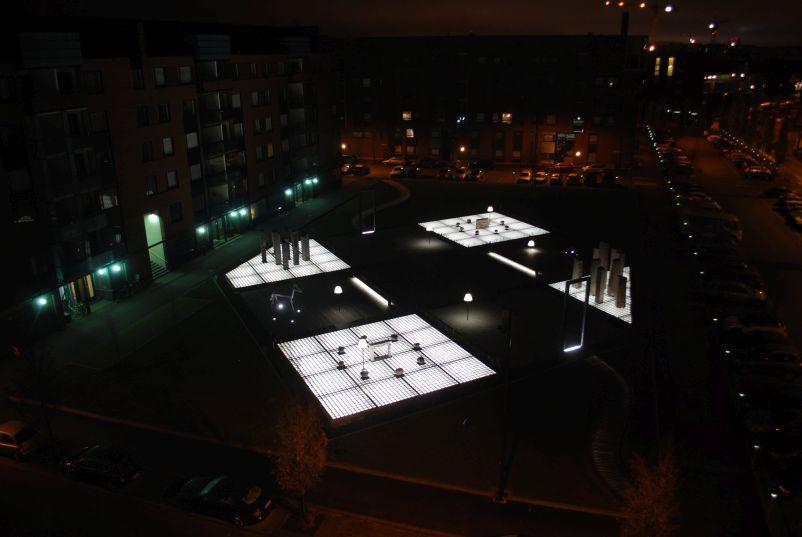
The design park named after Tapio Wirkkala in Arabianranta, Helsinki, is part of the Helsinki Art Museum collection.
Photo: City of Helsinki

